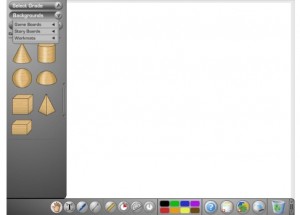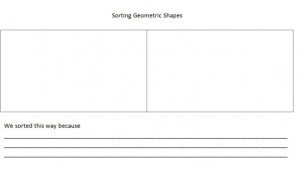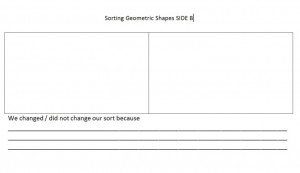Applicability of Information Visualization Software
by Jasmeet Virk ~ March 13th, 2012. Filed under: Module C. Emerging Genres of Teaching, Learning and Digital Technologies.As a class we have built a very comprehensive collection of virtual simulations for science and virtual math manipulatives. Now does having a good collection make me a better math /science teacher? I have a large library in my class filled with multitudes of fiction and non-fiction books. Does that make me a good Language Arts teacher?
I digress. The point is – we teachers hoard resources /tools but often are unable to help that child get the concept. Often teachers use the virtual tools as a glorified show and tell on the class smart board where students see the tools function but do not get to work with them. Since students barely interact with these tools, how are they going to find them beneficial?
There needs to be a realization amongst teachers that the affordance to support meaningful learning is not inherent in digital manipulatives. These manipulatives needs to be supported by good pedagogy to be effective. It is critical for teachers to choose technology based resources that can be employed in a constructivist learning process – that facilitate learning beyond drill and practice – that heightens critical thinking and is student centered. The tools need to be used in a process which will allow students to “get their hands dirty” in a multimodal ways.
The second issue regarding using virtual manipulatives is that are these tools effective or just a glamorous activity with no pedagogical value.
Srinivasan, Palmer, Brooks, and Fowler (2006) suggest that for novices anything other than the real system is perceived as fake. I can see their rational when I think of the stages of development suggested by Piaget. Can young learners make the connection between the math concept and the manipulative they are using or does it make the concept more confusing for them? I have on many occasions put away manipulatives when I see the students getting more confused.
One wonders, then about the applicability and effectiveness of virtual math manipulatives. Are they of pedagogical value, should they be used sparingly, only in the absence of the real thing, or in combination with them?
Research shows increased engagement, motivation, and conceptual understanding can be achieved through the use of virtual math manipulatives (Crawford and Brown, (2003), Reimer and Moyer, (2005)). Most importantly, using such manipulatives reduces the cognitive load for the learner and allows them to focus on the process (Suh and Moyer-Packenham, 2007).
Denise and I examined WisWeb and Illuminations because we found it more applicable to elementary math concepts but went ahead and used the Virtual Manipulative Web site as we wanted to share the wide scope of this tool with our class and experiment with it ourselves. We used grade 3 math and science outcomes to plan a lesson using the T-GEM model. In all honesty, it was not a hard feat –probably because we believe in the constructivist learning. To examine and interact with virtual manipulatives, to be able to discuss these processes to build knowledge is what makes using these manipulatives most effective. I guess all discussions always come down to the needs and effect of having a strong foundation!
Lesson attached below the references
References:
Crawford, C. & Brown, E. (2003). Integrating Internet-based Mathematical Manipulatives Within a Learning Environment. Journal of Computers in Mathematics and Science Teaching. 22(2), 169-180.
Reimer, K., & Moyer, P.S. (2005). Third-Graders Learn About Fractions Using Virtual Manipulatives: A Classroom Study. Journal of Computers in Mathematics and Science Teaching. 24(1), 5-25.
Srinivasan, S., Perez, L. C., Palmer,R., Brooks,D., Wilson,K., & Fowler. D. (2006). Reality versus simulation. Journal of Science Education and Technology, 15 (2), 1-5.
Suh, J.,& Moyer-Packenham, P. (2007) The application of dual coding theory in multi-representational virtual mathematics enviroments. Retrieved March 9th, 2012 from http://www.emis.de/proceedings/PME31/4/208.pdf
| Grade/Subject: Grade 3Math | Unit Topic/Theme: Geometry | Lesson #: 1 [ 45 min] | |
|
IRP Reference |
Geometry | ||
Targeted PLO(s) for this lesson:
|
|||
|
Student Learning Objective(s): |
Students will be able to ….
|
Teacher Preparation:
| Materials/Resources: |
|
Lesson Structure & Development:
|
Lesson Element |
Focus |
Time (min) |
Instructional Strategies & Learning Activities |
|
Orientation |
Activation of Prior knowledge ( 3D shapes have vertices and surfaces) |
10 |
Students will examine the 3D shapes on the Virtual Manipulative site. They will examine the face shapes, the number of vertices, number of surfaces, and number of edges.Setting on Virtual Manipulative: Manipulative: Geometric Solids Background : Blank
|
|
Generating idea
|
Students work with partners to develop ideas( about how they can solve this question) |
10 |
“Now sort the 3D objects into two columns” “You have to come up with your own criteria for sorting. Remember there are many ways to sort.”
Teacher will go from group to group and encourage brainstorming about different possible criteria – number of vertices, number of surfaces, and shape of faces… Setting on Virtual Manipulative
“Now draw your sort on side A of the given worksheet and explain the reason of your sort.”
|
|
Evaluating idea
|
Help students evaluate their ideas further through sharing with two other groups |
10 |
“Share your sort with another group.”“Discuss the similarities and differences between your sorts.”“Examine their criteria for the sort and explain your own criteria for the sort.”
“Repeat the same process with another group.”
|
|
Modifying idea:
|
Students apply their new knowledge to reexamine their idea |
10 |
Students go back to their computer to apply this new knowledge. [ 5 min] “Redo your sort if you think the sort needs to be adjusted.” “Draw your new sort on side B of the worksheet and explain your reason. We changed / did not change our sort because……”
|
|
Math Congress |
Class discussion |
5 |
Invite a group to show their new sort to the entire class on the Smart board using Virtual Manipulative and to explain their rationale. Then invite another group who did it differently.
Conclusion: 3D shapes can be sorted on basis of their different attributes. |
Science Extension
| Grade/Subject: Grade 3 Science | Unit Topic/Theme: Structures | Lesson #: 1 [45min.] | |
|
IRP Reference |
Curriculum OrganizerPhysical Science | ||
Targeted PLO(s) for this lesson:
|
|||
|
Student Learning Objective(s):
|
Students will be able to ….
|
Teacher Preparation:
| Materials/Resources: |
|
Lesson Structure & Development:
|
Lesson Element |
Focus |
Time (min) |
Instructional Strategies & Learning Activities |
|
Orientation |
Activation of Prior knowledge that 3D objects are used in structures |
5 |
Students will identify the type of 3D objects [prisms, pyramids, spheres, cylinders, cones, domes] and identify them within structures. In pairs they will examine the school building, pictures provided on the website and identify them.[ Students may use school Ipads and camera to take pictures of these shapes and identify them]  |
|
Generating idea
|
Students will work with a partner to identify where certain 3D objects get used in structures |
10 |
“Where in the structures on the website, pictures, and school building do you find different 3D objects being used?”http://speckyboy.com/2009/10/11/around-the-world-with-35-famous-lego-monuments-and-buildings/ 
“Do you see a pattern emerging? Are certain objects used only in specific parts of a structure?” Why do you think so? “Make entries on your worksheet and also write why you think the shapes are being used in that position.” |
|
Evaluating idea |
Students will check their idea |
15 |
Students will get together with another group and discuss and compare their finding.They will also share their reasoning.Students will repeat the same activity with another group.
|
|
Modifying idea
|
Students apply their new knowledge to modify their original idea |
10 |
Students will go back and re-examine the object shapes on the given resources and reevaluate their reasoning.They will modify their original idea if needed and provide an explanation as to why they are changing their idea. |
|
Class Discussion |
|
5 |
Teacher will show the same images on the smart board and invite groups to share their observation about where certain 3D objects are used in structures and why. Conclusion: Certain shapes get used in certain parts of structure depending on how strong they are. |



